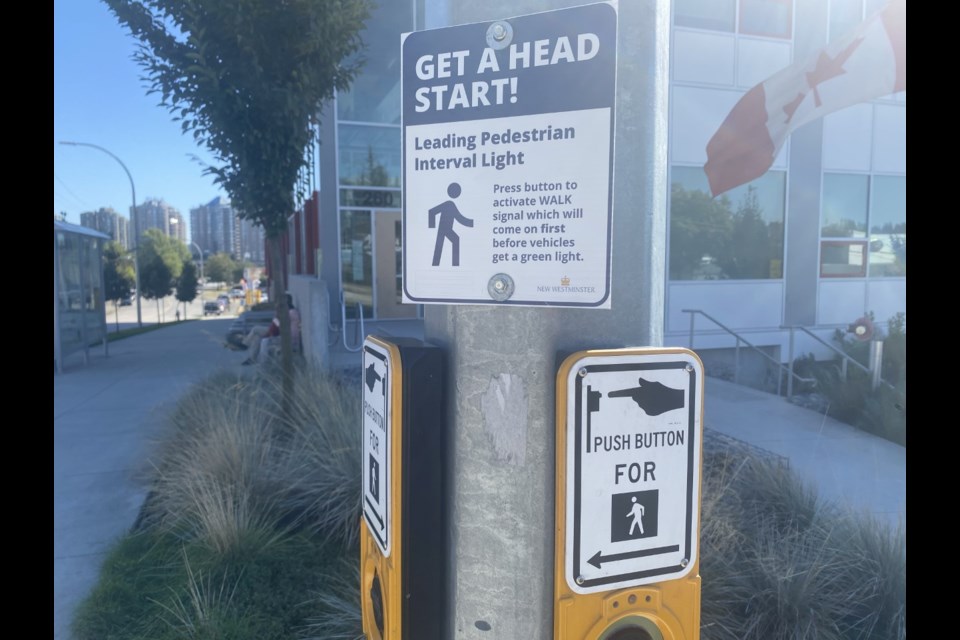It turns out that Sixth and Sixth isn’t the best fit for a pedestrian scramble – but that doesn’t mean it’s not in the mix for another intersection in New Westminster.
Appearing as a delegation at the Jan. 8 council meeting, New West resident John Folka asked council to consider a “scramble intersection” at Sixth Avenue and Sixth Street. He said the city’s public engagement about changes planned for the Uptown Plaza sought feedback about that intersection.
“As somebody who visits there, both as a pedestrian as well as a driver that often swings in and gets a coffee and leaves, it's a problematic intersection, both for pedestrians and cars,” he said.
Folka suggested the City of New Westminster look at turning Sixth and Sixth into a scramble intersection, which is a type of traffic signal that temporarily stops all vehicular traffic – allowing pedestrians to cross an intersection in every direction, including diagonally, at the same time.
Saying there’s a “backup” of traffic on Sixth Street because of the elimination of a right-turn lane on Sixth Street (in front of Waves Coffee House), Folka believes motorists and pedestrians could both benefit from a scramble intersection.
“I think it would it would allow cars to move freely through the intersection without worrying about a pedestrians and allows pedestrians to cross the street without worrying about the flow of traffic,” he said.
In November 2021, the City of New Westminster issued a press release regarding the launch of an engagement process for Uptown Sixth Street Public Realm Improvements, an initiative that would see Sixth Street, between Sixth Avenue and Belmont Street, reimagined to better orient the street towards pedestrian uses, including more flexible uses of Sixth Street and improved accessibility.
Along with wider sidewalks, improved lighting, more seating options and temporary road closures for special events, the city stated a “pedestrian scramble” was being considered for Sixth Street and Sixth Avenue.
Coun. Daniel Fontaine asked staff for an update on the pedestrian scramble at that location. He also questioned the use of “delayed crosswalks” which allow pedestrians to start crossing the street before vehicular traffic.
Kwaku Agyare-Manu, the city's senior manager of engineering services, said an analysis done for that intersection found the intersection wasn’t ideal for a pedestrian scramble. He said the city will try and find the best configuration for that intersection, as part of its work in the uptown.
Fontaine questioned if a pedestrian scramble is something that would be considered at other locations in the city, such as near Douglas College where there is lots of pedestrian traffic. He also questioned if the “delayed signal” is something that would be considered at Sixth and Sixth.
Mike Anderson, the city’s manager of transportation, elaborated on the analysis done at Sixth and Sixth. He said it determined that a pedestrian scramble at that location would be challenging, particularly for transit movements through the intersection.
Anderson said the volume of pedestrians at the Sixth and Sixth intersection is quite high through the day, but it may not be as high as other locations where scrambles are used.
“That said, there are very few scramble intersections in the Lower Mainland to use as comparison,” he later told the Record. “In the end, our technical analysis concluded that the trade-off would be increased delays to transit riders, drivers, and even pedestrians, which led us to decide against implementing a scramble there.”
New Westminster, however, hasn’t ruled out using a scramble elsewhere in the city.
“We are open to considering a scramble at other locations in New Westminster,” Anderson told the Record. “The most likely location where pedestrian traffic may warrant it is at Carnarvon Street and Eighth Street, where we have large volumes of people walking between SkyTrain and Douglas College.”
Uptown, city staff are “actively considering” a “leading pedestrian interval” at the Sixth and Sixth intersection, Anderson said.
“We do have one of those intersections in town. Twelfth Street and Third Avenue is the first location where we tried it,” he told council. “It seems to work quite well so we are considering it for other locations as part of our transit priority, transit speed and reliability study.”





